Table of Contents
Knee popping and pain are problems often encountered not only by athletes, but also many other people. While occasional popping sounds in the knees can be normal for healthy joints, experiencing pain alongside it should not be taken lightly. It could be a symptom of a more significant musculoskeletal issue. In this article, you’ll find information about when it’s advisable to seek medical attention or consult a physiotherapist for knee popping and pain. Additionally, you’ll discover exercises that may help alleviate the discomfort.
What are the most common causes of knee popping and pain?
Most likely, you’ve experienced that popping or cracking sound in your knee while moving around. Although it can be quite startling, in general, it’s nothing serious. The most common cause is the formation of air bubbles within the synovial fluid space (the fluid that reduces joint friction) that burst during movement. If the popping is not accompanied by pain, swelling, redness, or any other issues, there’s no need to worry, as it doesn’t indicate anything serious.
Do you want to find out what else can cause joint cracking and whether it’s dangerous? Then you shouldn’t miss our article: Joint Cracking and Popping: A Common Phenomenon or a Warning of a Problem?
Almost everyone experiences knee pain at some point in their life. It could be as simple as pushing too hard during a run, lifting heavier weights at the gym, or making a sudden move during a soccer game for which the knee wasn’t prepared. However, knee troubles aren’t exclusive to athletes; less active individuals can also experience them due to various reasons. While the pain may subside after a few days, it can also persist for months or even years. To prevent it from worsening, it’s crucial to identify the underlying cause.

The following factors often contribute to the onset of joint pain:
- insufficient or excessive physical activity
- exercising in a wrong way
- overweight or obesity
- muscle imbalances
- weak or tight muscles
- unhealthy lifestyle
- genetics
These factors can be the cause of damage to ligaments, tendons, cartilage, or muscles surrounding the knee, leading to knee conditions. [1]
The most common knee conditions
Knee pain can occur from the front, back, sides, or top with varying intensity and from different causes. However, only a doctor can provide an accurate diagnosis based on a detailed examination.
- Osteoarthritis (osteoarthrosis): It occurs when the cartilage wears down, becomes thinner, and the bones meet with less cushioning. This can cause not only joint pain but also audible sounds. [2]
- Ligament injuries: The most common is the damage to the anterior cruciate ligament (ACL), which can occur, for example, during a fast twisting movement of the leg. [2]
- Meniscus injuries: The meniscus is a cartilaginous structure that acts as a shock absorber in the knee joint. In the case of an injury, it can get trapped in the joint space, resulting in pain, swelling, and limited knee mobility. [1]
- Tendinitis (tendon inflammation): An inflammatory condition of the tendons that can develop due to overuse during sports activities such as running, cycling, or playing basketball. Sometimes, it is also referred to as “jumper’s knee.” [3]
- Patellofemoral pain syndrome: You may know it as the “runner’s knee” because it is commonly experienced by runners. It often occurs among beginners who push themselves too hard at the start, going from minimal activity to daily running. In addition to knee popping, it also manifests as pain above the kneecap, which worsens during movement. [1]
- Osgood-Schlatter disease: This is an inflammatory condition of the tendon that manifests as swelling below the knee and pain in its front part. It can develop due to sports-related overuse but also during rapid growth in children. [7]
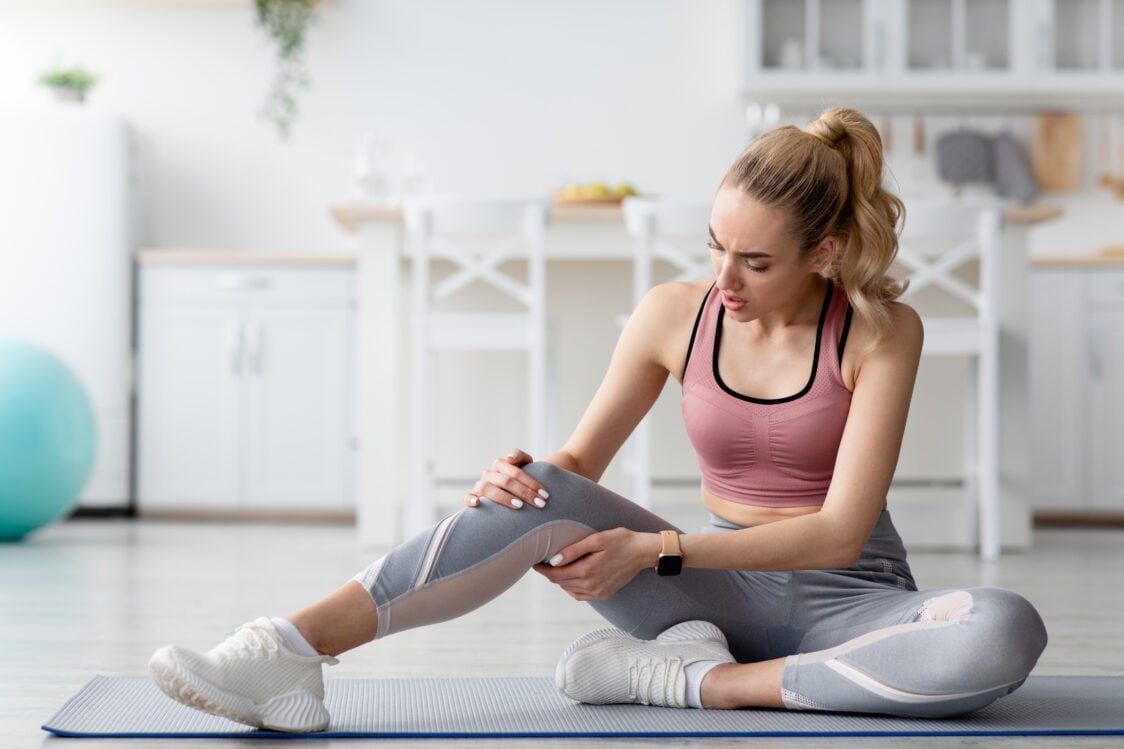
How to keep your knees healthy?
We should take care of our knees even if they don’t make any scary sounds, don’t hurt, and work smoothly. By implementing the lifestyle measures mentioned below, you can support the proper function of your knees as well as hips and other joints. [2]
What can help keep your knees in good condition for as long as possible?
- Optimal Weight: Excess weight or obesity can lead to joint overloading, increasing the risk of cartilage wear and the development of osteoarthritis.
- Healthy Movement: During physical activity, joints are lubricated, and important nutrients reach them through blood circulation, which is crucial for their functionality. Besides sports activities, even regular movements like walking benefit them. However, avoid overexertion during sports and make sure to allow time for rest and recovery.
- Warm-Up and Stretching Before Doing Sports: Before engaging in any sports activity, don’t forget to warm up and stretch all your joints. This prepares them for the workload and reduces the risk of injuries.
- Strength Training: Doing strength exercises will help strengthen the muscles and other supporting structures around your joints. When you exercise with proper technique and full range of motion, you also support their mobility.
- Knee Braces: While exercising, you can also reach for knee braces to provide support and keep the joint warm. They are particularly helpful during heavy squats, deadlifts, or weightlifting.
- Joint Supplements: Taking care of joint health can also be aided by comprehensive joint supplements. They include substances such as glucosamine, chondroitin, MSM, and other ingredients that are essential for the proper functioning of the musculoskeletal system. This may also encompass ingredients like shark cartilage, collagen, or Boswellia serrata. To learn more about what a quality joint supplement should contain, be sure to check out our article: How to Choose the Best Joint Supplement?
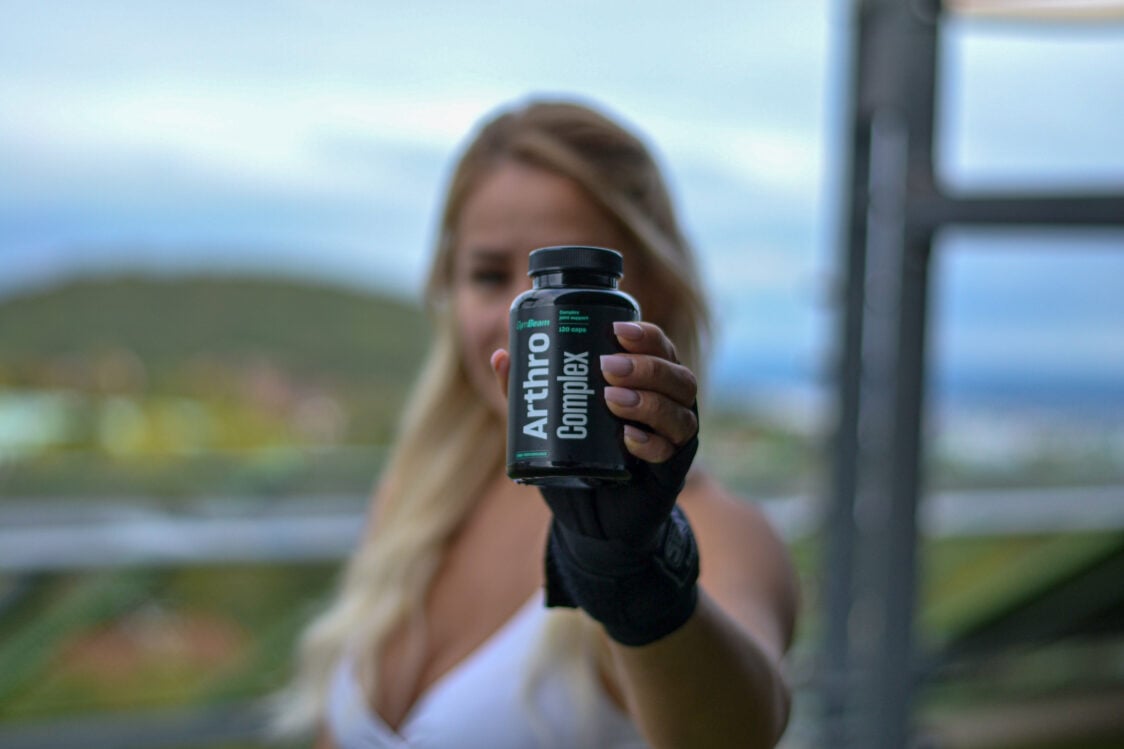
When should you seek medical attention for knee popping or pain?
If the knee popping itself is not accompanied by pain, stiffness, or swelling in the joint, it’s likely not a serious issue. In the case of pain, it is often sufficient to rest the knee for a few days, take a break from exercise, use a knee brace or sleeve, or have the knee professionally taped. Typically, the discomfort will gradually diminish.
However, if you have been experiencing pain for several weeks, and the discomfort is getting worse while additional symptoms are emerging, it’s essential to seek medical attention as soon as possible. These problems may eventually start to limit not only your sports activities but also your everyday life. Unfortunately, there is no magical pill or method that can instantly and permanently eliminate knee pain. It’s also not worth trying various home remedies or applying special homemade herbal ointments to the knee. The best course of action is to visit a doctor (orthopaedist) or a physiotherapist, who can perform the necessary diagnostics and recommend appropriate treatment. [4]
Which symptoms can indicate knee damage?
- Pain: Lasts for 2–3 weeks or gradually worsens and is present even at rest. [4]
- Swelling and Redness: In case of injury or disease, the area around the joint may be swollen, red, and warm.
- Fever: Inflammatory joint diseases may also be accompanied by a fever. [5]
- Joint Instability: If, for example, the knee wobbles from side to side and feels loose when putting your weight on it, it may be the result of torn or loosened ligaments. [5]
- Stiffness and Reduced Range of Motion in the Joint: Another warning sign is when your joints restrict you from performing movements like deep squats or other motions that you would normally manage with ease. [5]
You might be interested in these products:
What is the usual approach to treating knee conditions
The key to successful knee pain treatment is a professional diagnosis performed by an orthopaedist, sports physician, or physiotherapist. Based on the examination results, they will establish a diagnosis and propose a treatment plan. This may involve the recommendation of using knee sleeves, braces, cold therapy, rehabilitation exercises, medications, or supportive joint supplements. Additionally, treatments like magnetotherapy, electrostimulation, or, in extreme cases, surgical procedures (knee replacement, meniscus, ligament, or tendon surgery) may be advised. [6]
The entire course of treatment varies from case to case. Nonetheless, it is crucial to adhere to the treatment plan recommended by your doctor or physiotherapist in the long term. This is especially important in the postoperative period, where faithfully undergoing the entire rehabilitation process is key to achieving optimal knee healing. [6]
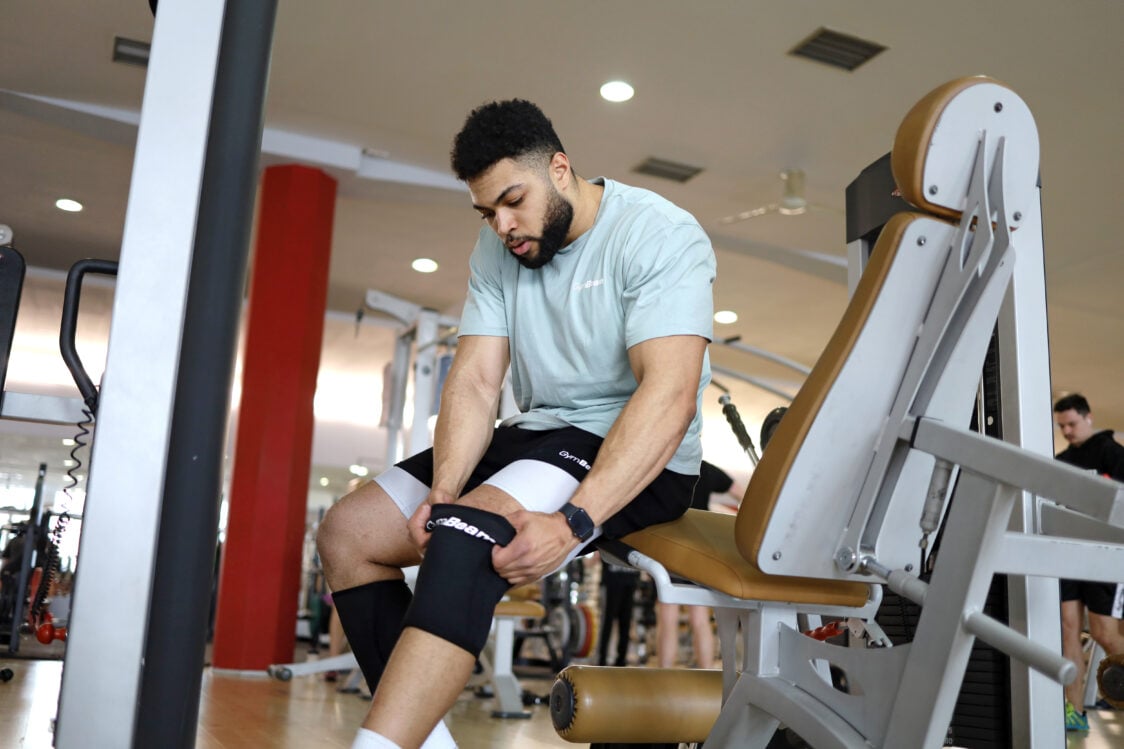
Exercising with knee popping and pain
If you experience an occasional pop in your knees, but you have no other issues with them, you don’t need to restrict yourself during sports activities. However, always remember to warm up and mobilize all your joints to prepare them better for the workload, and also pay attention to proper exercise technique.
However, if you experience pain in your knees, avoid training and pushing through the pain, thinking you will get used to it or train it away. Also, refrain from self-diagnosing and creating a mobility program on your own, and instead, seek advice from a professional. A physiotherapist is best suited to guide you in your training, as they can conduct a movement assessment and identify the underlying issue.
Often, it involves overuse of tendons, muscles tightness, or some kind of muscle imbalance. A physiotherapist will then show you specific exercises that could gradually alleviate your pain. They will also recommend what activities to avoid during training and how much stress you can put on your knee. After that, it’s up to you to heed their advice and put it into practice effectively.
Why exercise with knee pain?
You might think that resting your knees when they hurt is the best approach. While that may be true for acute pain caused by an injury, when it comes to chronic (long-term) knee pain, reduced activity can do more harm and even worsen the issues. On the other hand, appropriate exercises designed by a physiotherapist can help you regain strength and mobility in your knees and restore their functionality. These exercises typically include stretching or strength-training exercises using body weight, but also massages with tools. [8]
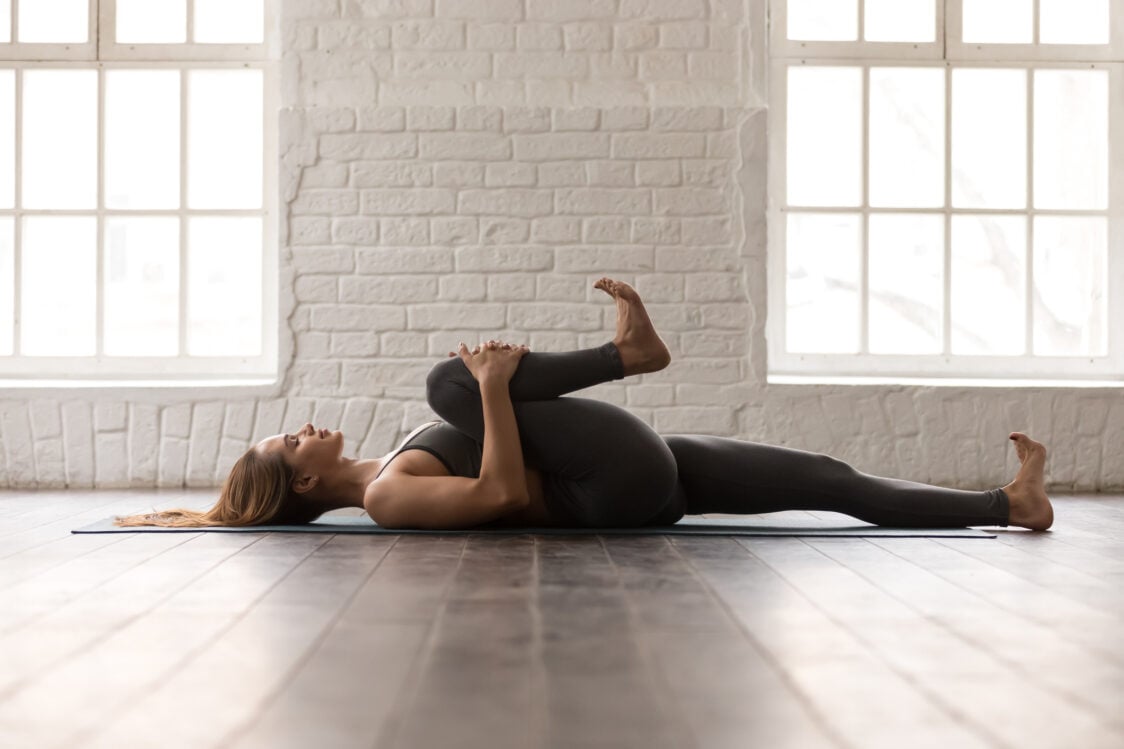
How to exercise with knee pain?
When exercising with painful knees, always proceed with maximum caution, especially when trying out a new exercise. Start with a lower number of repetitions or shorter duration, which you can gradually increase over time. Prior to strength training, always dedicate a few minutes to warm-up, such as walking on a treadmill or cycling on a stationary bike, and perform dynamic stretching, focusing primarily on mobilizing the hip and knee joints.
If the pain in your knees worsens during exercise, it’s better to reduce the intensity or end the workout prematurely. The following exercises are commonly recommended for knee issues, but they may not be suitable for everyone. Therefore, if you find them uncomfortable, refrain from performing them. Also, be mindful of overexertion. Choose a maximum of 3 exercises from each group and consistently incorporate them into your routine to reap long-term benefits. Before starting with any knee exercises, it’s advisable to consult them with a doctor or physiotherapist.
1. Stretching Exercises
The goal is to increase the flexibility of the muscles in the lower extremities, so they do not restrict the knee’s function in any way. Shortened muscles in the front (quadriceps) or back (hamstrings) of the thighs can be a potential issue.
- To stretch your quadriceps, simply stand upright, bend one knee, and bring the heel towards your buttocks. Try to keep the knees of both legs close together. Hold this position for a few seconds, then switch legs.
- To effectively stretch your hamstrings, start by lying on your back. Keep one leg extended on the mat and slightly bend your other knee, lifting it upwards. Use your hands to gently pull the bent leg towards your body. Hold this position for a few seconds, then switch legs. Repeat this stretch at least 3 times for each leg. [9]

2. Massaging the Muscles of the Lower Extremities
Massaging the leg muscles can help release tension and stiffness that may contribute to knee pain. You can easily do it yourself using a foam roller or massage ball. These tools are just perfect for relaxing the glutes, thighs, and calves.
- Place the foam roller or massage ball under the targeted muscle, and then gently press onto it using your own body weight. Move your body in various directions to massage the muscle effectively. You can control the intensity of the massage by adjusting the pressure you apply to the tool based on your comfort level.
- To relax your muscles more effectively, reach for a massage roller stick or massage gun. However, make sure to use it only on muscles, the soft tissues, and avoid bones and joints.
Massage tools are also ideal for supporting post-workout recovery. To learn how to use them effectively, you can read the article: How to Support Regeneration Using a Massage Gun and Other Tools?
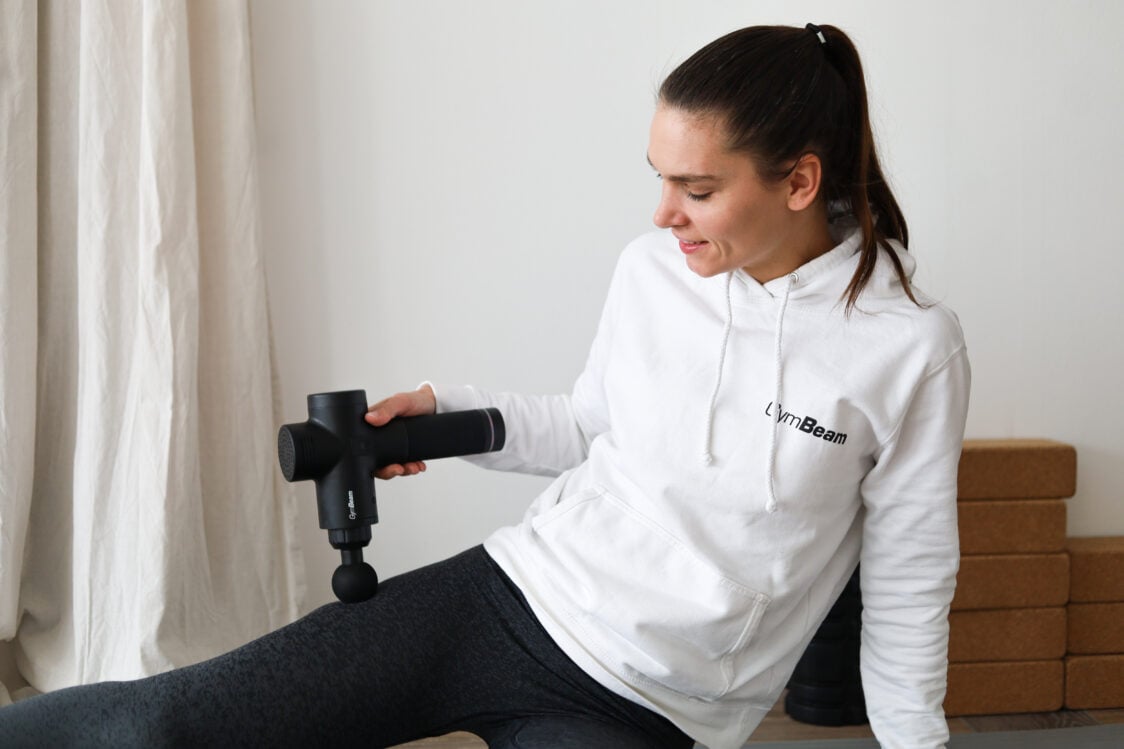
3. Strengthening Exercises for Knee Ligaments
Knee ligaments (such as the anterior or posterior cruciate ligament) are crucial for the flexibility and stability of the entire knee, so it’s essential to keep them strong and flexible. Exercises focused on strengthening the thighs and calves are ideal for maintaining their health.
- These exercises include squats, lunges, calf rises, leg extensions, hamstring curls, and other exercises performed within a comfortable range of motion for you.
- There are also specific rehabilitation exercises, such as straight leg raises, single leg raises with the help of a soft foam roller, or side lying leg raises. [10–11]
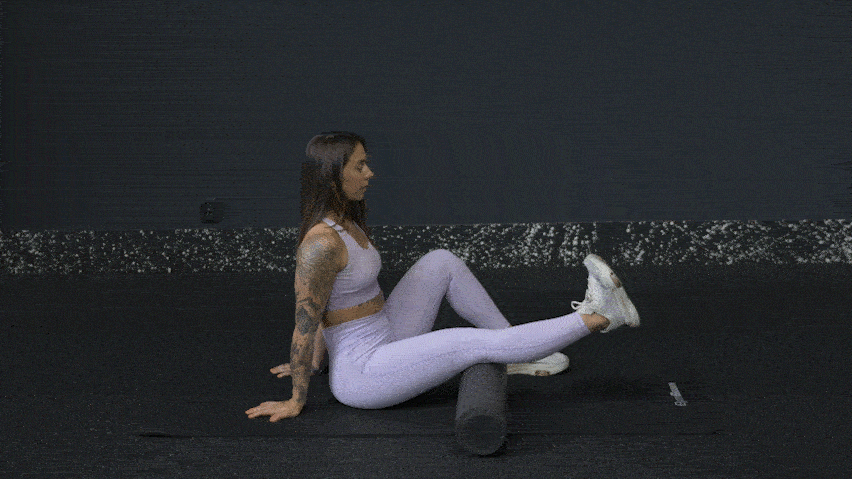
4. Knee Stability Exercises
These exercises are focused on strengthening the muscles that support proper alignment of the knee joint.
- These exercises include various balance-focused movements, such as squats or lateral band walks, as well as squats on a balance pad (while using maximum caution, adjusting the range of motion according to your current abilities and balance skills).
- Different variations of the glute bridge or box step-ups are also suitable for improving knee stability. [12]
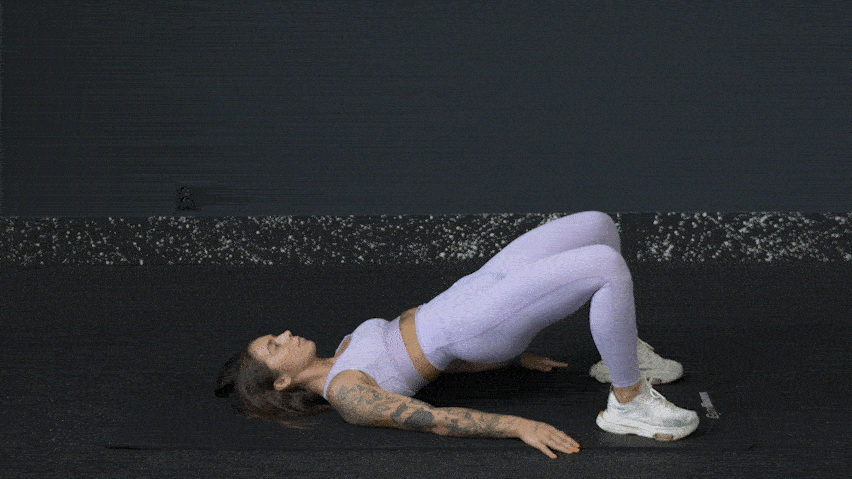
5. Sports Activities With Less Knee Strain
If you experience knee pain, you should avoid activities that involve hard impacts, jumping, jolting, rotating, or rapid changes of direction, as these could further damage your knees. Therefore, sports such as football, running, basketball, squash, or tennis are not recommended. Instead, opt for sports that are gentler on your knees. [13]
We have also addressed musculoskeletal issues in other articles:
- Are you troubled by back pain? You can find the answer to what causes it most frequently and how to address it in the article: Back Pain: 10 Most Common Causes and Solutions to Get Rid of It
- Find more information about the causes of elbow pain in the article: Tennis and Golfer’s Elbow: What Causes Them and How to Get Rid of Them?
- If you also want to learn how to proceed with muscle injuries, read the article: What to Do With a Muscle Strain or Muscle Tear and How to Tell Them Apart?
- Are you interested in what impact does running have on joints? Then be sure to check out our article: Does Running Damage Your Knees and Other Joints?
What are the main takeaways?
Knee problems can significantly impact your life, so it’s essential to prioritize prevention and take maximum care of your joints. Maintaining a healthy weight, following a balanced diet, incorporating joint supplements, and engaging in optimal physical activity can all be beneficial. However, if knee pain persists for an extended period, it’s crucial to address it. The first step is to consult a doctor for recommended treatment, and a physiotherapist can then guide you with exercises. Stretching, strengthening, and stability exercises for the knees, as mentioned in the article, can be particularly helpful.
If you liked the article and know someone who suffers from knee pain, be sure to share it with them. You might just help them find the cause of their issues or provide them with useful tips for appropriate exercises and joint care.
[1] Knee pain: MedlinePlus Medical Encyclopedia. – https://medlineplus.gov/ency/article/003187.htm
[2] Made for This Moment. Knee Pain—Causes & Treatment . – https://www.asahq.org/madeforthismoment/pain-management/types-of-pain/knee-pain/
[3] Knee Pain and Problems. – https://www.hopkinsmedicine.org/health/conditions-and-diseases/knee-pain-and-problems
[4] Treatment for knee pain. The Chartered Society of Physiotherapy. – https://www.csp.org.uk/conditions/knee-pain/treatment-knee-pain
[5] When to see a Physio for Knee Pain? – https://australiansportsphysio.com/physio-for-knee-pain/
[6] Guide. Physical Therapy Guide to Knee Pain. – https://www.choosept.com/guide/physical-therapy-guide-knee-pain
[7] Physiopedia. Osgood-Schlatter Disease. – https://www.physio-pedia.com/Osgood-Schlatter_Disease
[8] Hospital for Special Surgery. The Best Types of Exercise for Sore Knees. – https://www.hss.edu/article_exercise-for-sore-knees.asp
[9] HSS. Stretches and Exercises for Knee Pain, from a PT. – https://www.hss.edu/article_stretches-exercises-knee-pain.asp
[10] Fort Worth Bone & Joint Clinic. 11 Exercises to Reduce Knee Pain. |– https://thcboneandjoint.com/educational-resources/knee-exercises.html
[11] Hospital for Special Surgery. Stretches and Exercises to Strengthen Your Knees, from a PT. – https://www.hss.edu/article_exercises-strengthen-knees.asp
[12] Physiotherapy, B. M. The 7 Best Exercise for Knee Stability and Strength. – https://www.bodymotionphysio.com.au/the-7-best-exercise-for-knee-stability-and-strength/
[13] EverydayHealth.Com. Exercising With Knee Pain. – https://www.everydayhealth.com/knee-pain/exercising-with-knee-pain.aspx

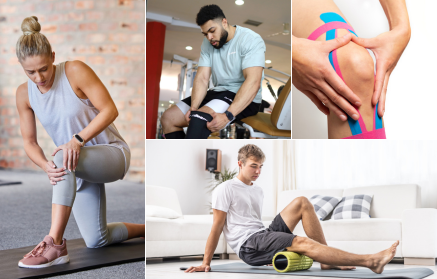
Add a comment